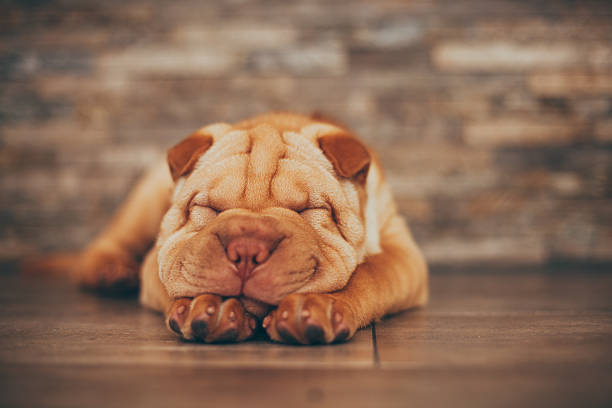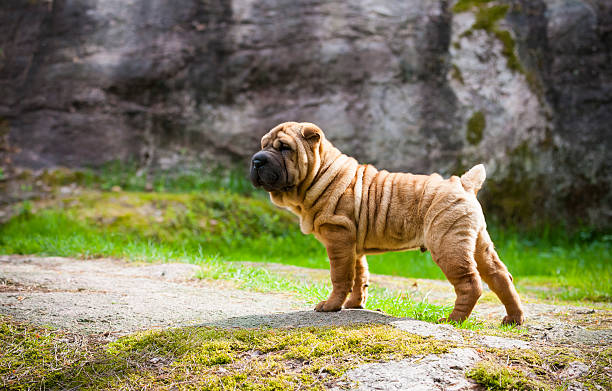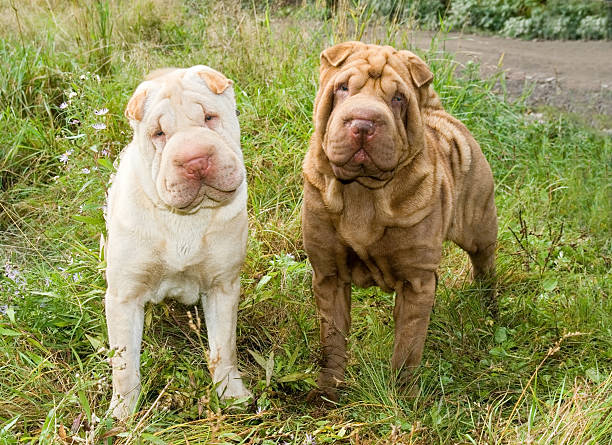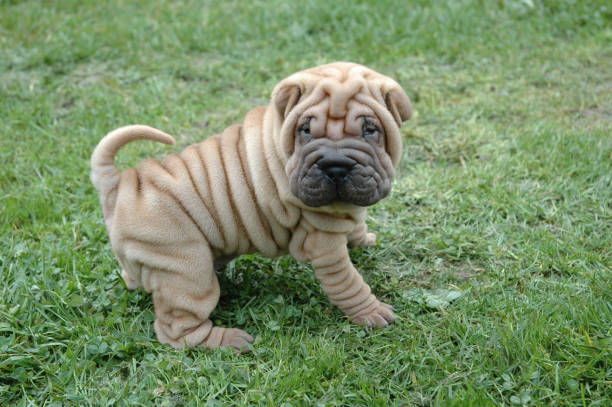Shar Pei

Breed History:
The Shar Pei, also known as the "Chinese Shar-Pei," is an ancient and distinctive breed that originated in China. It was originally bred to be a working dog, primarily used for guarding, hunting, and herding livestock. The breed is particularly famous for its deeply wrinkled skin and "hippopotamus" face, which were developed to protect it during its original use in dog fighting, as the wrinkles could protect against bites.
The Shar Pei’s name translates to "sand skin" in Chinese, referencing its bristly coat. Though its early history is somewhat obscure, the breed has been around for over 2,000 years. It is believed to have been used by Chinese farmers as a guard dog, known for its loyalty and protective nature. In the 20th century, the breed nearly became extinct but was revived through efforts from enthusiasts who helped reestablish the breed’s presence in the Western world.
The Shar Pei became internationally known in the 1970s when it was introduced to the United States. Despite its tough origins, it is a calm, loyal, and affectionate companion in modern times.
|
Gender |
Height |
Weight |
|
Male |
46–51 cm |
18–25 kg |
|
Female |
43–51 cm |
18–25 kg |
Size – Medium
Life Expectancy: 8–12 years

Breed Appearance:
The Shar Pei is a medium-sized dog known for its signature wrinkled skin and unique appearance. Its coat is short, bristly, and stiff, with a distinctive "sandpaper" texture that gives it its name. The wrinkles on its face and body are one of its defining features, with the skin folding around the muzzle, forehead, and neck. These deep folds give the Shar Pei a somewhat comical, yet regal, expression.
Despite its somewhat stocky build, the Shar Pei has a square, compact body with a broad chest and strong bones. The breed’s tail is thick at the base, curving over its back in a tight curl. The Shar Pei’s eyes are small, almond-shaped, and deep-set, contributing to its calm and contemplative demeanour. Its coat comes in a variety of colours, including red, fawn, black, blue, and chocolate.
Breed Type – Family/Guard:
The Shar Pei is an excellent companion dog, known for its loyalty and calm demeanour. Despite its history as a guard dog, it is usually gentle and affectionate with its family members. The breed is known to form strong bonds with its owners and can be quite protective of its home and family.
While the Shar Pei is generally friendly, it can be aloof or reserved around strangers. Early socialisation is important to ensure that it is comfortable with new people and other pets. Due to its guarding instincts, it may act protective, but it is rarely aggressive.
Training the Shar Pei requires patience and consistency. The breed can be somewhat independent and stubborn, but with positive reinforcement, it will respond well. It is intelligent and learns commands, but its independent nature means that it can sometimes do things on its terms.

Training:
The Shar Pei is an intelligent breed, but its independent and sometimes stubborn nature can make training a challenge. While it is capable of learning commands, it is not always eager to please and may decide to do things on its own terms. This makes training require patience, consistency, and a calm, confident handler.
Positive reinforcement is the most effective training method for the Shar Pei. Using treats, praise, and rewards will encourage the dog to follow commands. Harsh methods or punishment will not work well with this breed, as it can lead to resistance or reluctance to engage in training.
Early socialisation is also important, especially for the Shar Pei, as its protective instincts can lead to wariness of strangers. Socialising the dog from a young age will help it become more comfortable in a variety of environments and with different people.
Health & Care:
The Shar Pei is generally a healthy breed, but like many purebred dogs, it is prone to certain health issues. Some of the most common health concerns for the breed include:
-
Hip dysplasia
-
Entropion (a condition where the eyelids roll inward)
-
Skin infections (due to its wrinkles, which can trap moisture and debris)
-
Respiratory issues (due to its short muzzle, making it prone to brachycephalic syndrome)
The Shar Pei has a lifespan of around 8–12 years. Regular veterinary visits, a balanced diet, and a controlled exercise routine can help keep the breed healthy. Due to its skin folds, it is important to keep the wrinkles clean and dry to prevent infections. Regular grooming and hygiene maintenance are essential to avoid skin irritation.

Living Conditions:
The Shar Pei is well-suited to apartment living, as it is a relatively low-energy breed. It enjoys moderate exercise, such as daily walks and some playtime, but it does not require excessive amounts of space. A secure, fenced yard is ideal, but it can adapt to smaller living environments as long as its exercise needs are met.
While the Shar Pei is generally calm indoors, it will benefit from daily mental and physical stimulation. It enjoys spending time with its family and may become anxious or bored if left alone for long periods. This breed is not overly vocal but may bark to alert its owners of any unusual activity or intruders.
Exercise:
The Shar Pei is a moderately active breed that requires regular exercise to stay healthy and fit. Daily walks, as well as some time for play or mental stimulation, are essential for maintaining the dog’s well-being. While it does not require excessive exercise like some high-energy breeds, it still enjoys a good walk or short play session each day.
It is important to avoid overexertion, particularly in hot weather, as the Shar Pei’s short muzzle can make it more prone to breathing difficulties in warm conditions. Low-impact activities are ideal, as excessive strain can lead to joint issues due to its compact build.
Grooming:
The Shar Pei’s coat is relatively low-maintenance compared to other breeds, but the deep wrinkles on its face and body require regular attention. The wrinkles must be cleaned and dried regularly to prevent infections or irritation, as moisture and debris can get trapped in the folds of skin. Using a damp cloth to wipe away dirt and sweat from the wrinkles will help keep the skin healthy.
The Shar Pei sheds moderately, and regular brushing can help manage loose hair. Bathing should be done only when necessary, as excessive bathing can dry out the dog’s skin. The breed also benefits from regular ear cleaning, nail trimming, and dental care.

Advantages:
-
Loyal, affectionate, and good with families
-
Moderately low-maintenance grooming requirements
-
Suitable for apartment living due to its calm demeanour
-
Low exercise needs, making it ideal for owners with a relaxed lifestyle
-
Quiet, not prone to excessive barking
-
Intelligent and independent, with the ability to be a good watchdog
Disadvantages:
-
Can be stubborn and independent, making training a challenge
-
Prone to certain health problems, especially related to its skin folds and eyes
-
Requires regular attention to its wrinkles to prevent skin infections
-
A protective nature may lead to aloofness or aggression toward strangers
-
A short muzzle can cause breathing difficulties in hot or humid climates
-
Not the best choice for first-time dog owners due to its unique care needs

